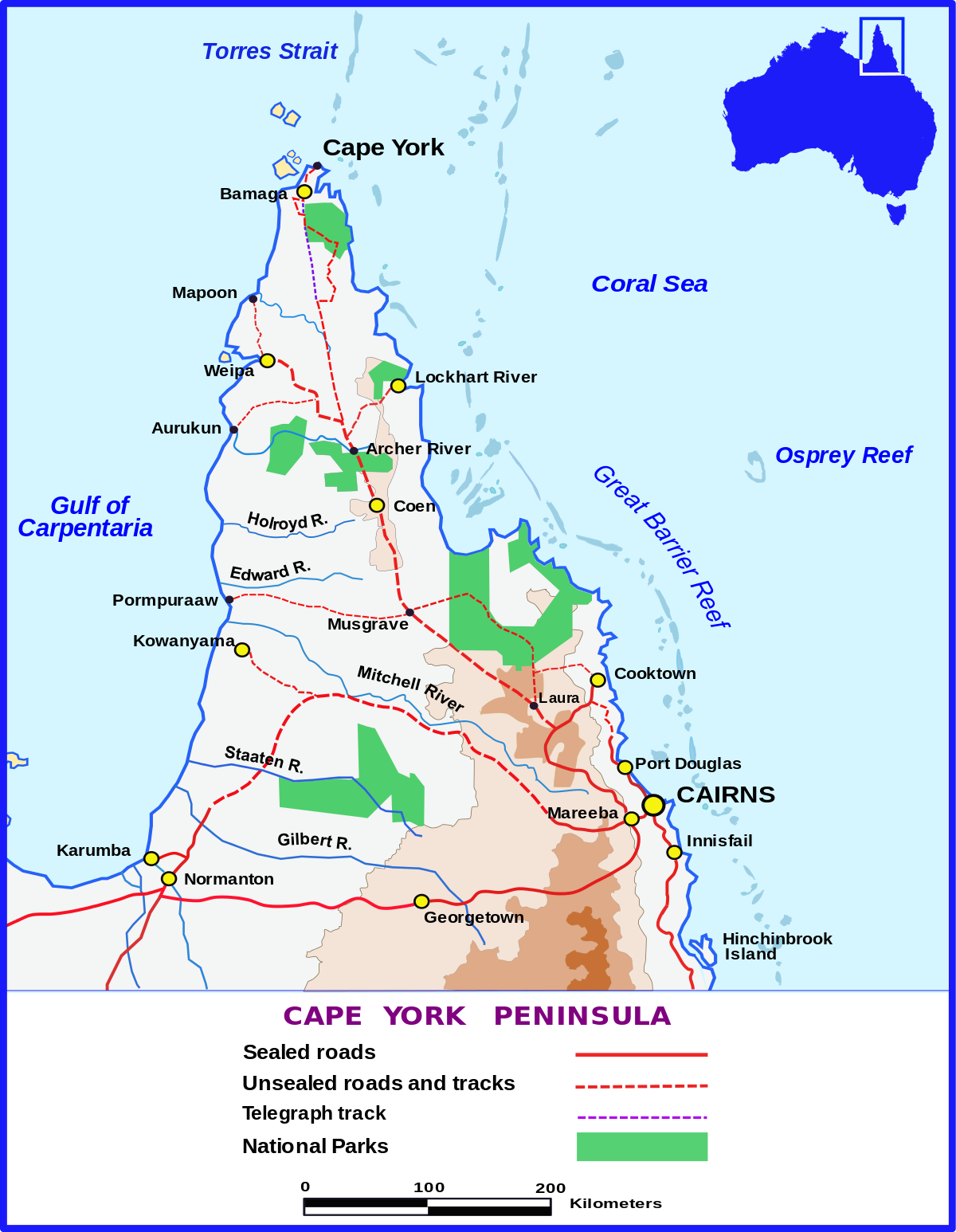The EWB Challenge occurs each year bringing together first year students to develop a prototype that solves a real world problem. This year the EWB Challenge is being delivered in partnership with the Centre for Appropriate Technology (CfAT), therefore we are placed in the Cape York region of Far North Queensland.
Cape York By Summerdrought – Own work, CC BY-SA 4.0, Link
By Summerdrought – Own work, CC BY-SA 4.0, Link
The Cape York community experiences unique challenges due to the wet and dry season (EWB Challenge, 2020a). The challenges caused by this weather phenomenon includes isolation of the community due to damaged and flooded roads, poor quality drinking water caused by the erosion, structural damage and dry season causes higher intensity fires (Cobon et al., 2017, p. 2). This by extension affect’s the community’s way of life, their ability to obtain education and earn income. Our concept design should therefore meet the need of the community’s desire to elevate the difficulties that are caused by the wet and dry season.
The Aboriginal community also have a unique cultural and social dynamic which stems from their understanding of “country” which to them is both a physical and spiritual connection (Australian Government National Oceans Office, 2004, p. 3). Their culture and their social interaction are dictated by their understanding of “country”. When deciding on our concept design, it is necessary to consider the cultural and social impact that “country” has and to meet the community’s needs. Due to the differences in social and cultural norms, the design must be human centred to be effective.